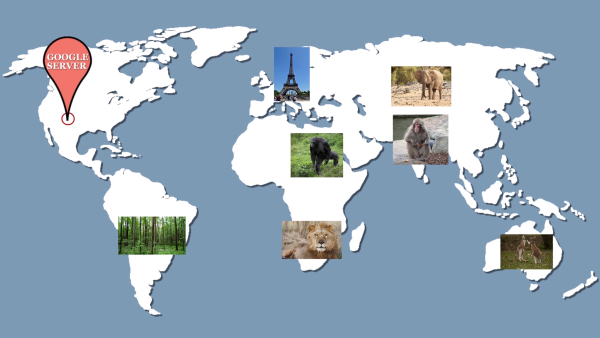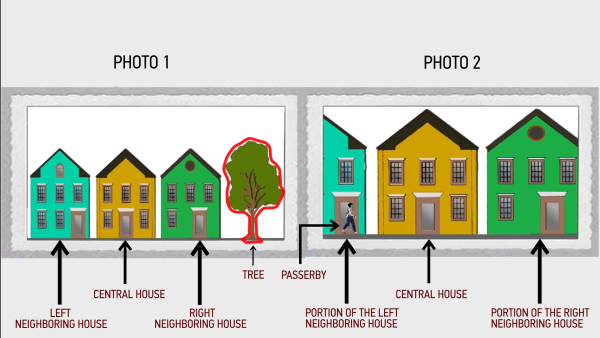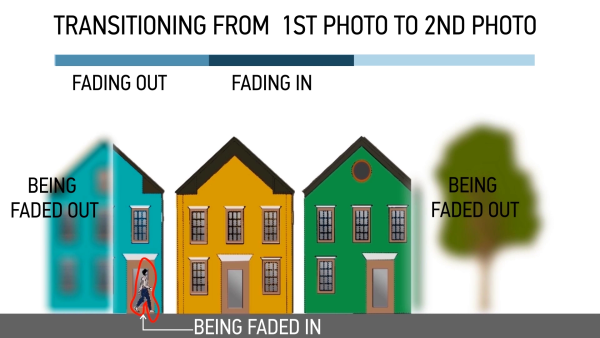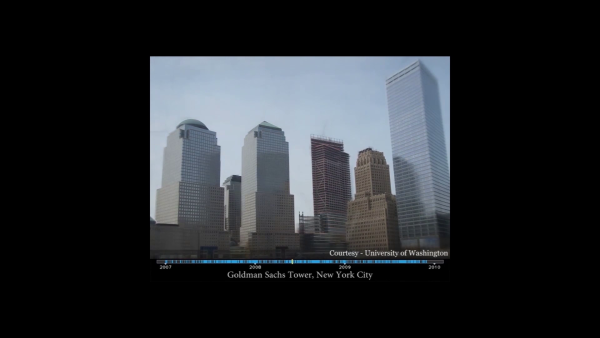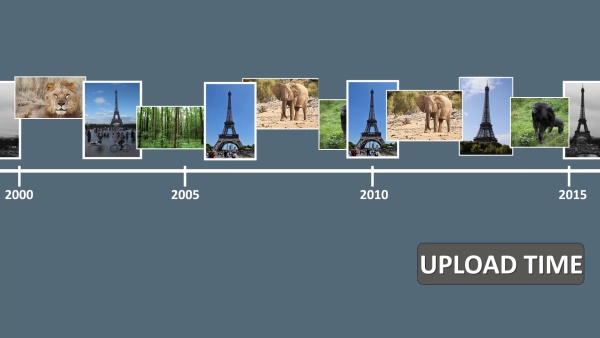Google created more than 10,000 timelapse videos using millions of free photos available online.
This patent from Google reveals the details of this technology.
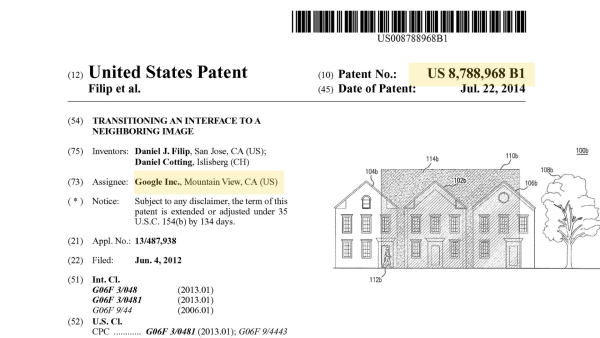
Google receives millions of images clicked by random users. Based on patern matching, Google finds photographs of a
particular location.
Lets check out an example.
Here are two photographs of a same location.
A first image of the location is provided by a first user (John Doe) and the second image of the same location is captured by another user
(George May) at another time.
While the first image includes a house in the center, a left neighboring house and a right neighboring house. All the 3
houses are captured in their entirety.
The second image only includes a portion of the left and right neighboring houses. Further the second image includes a
passerby which is not present in the first image. Additionally the first image includes a tree which is not present in
In order to create smooth transition, the content present in the first image is progressively faded out while the
features of a second image are correspondingly faded in as part of transition from the first image to the second image.
This is how Google accomplishes smooth and near-seamless transition between the images.
In order to create time-lapse
video, they just arrange the images according to their upload time.
Patent Information
Transitioning an interface to a neighboring image
US 8788968 B1
Publication number US8788968 B1
Publication type Grant
Application number US 13/487,938
Publication date Jul 22, 2014
Filing date Jun 4, 2012
Priority date Jun 4, 2012
Inventors Daniel J. Filip, Daniel Cotting
Original Assignee Google Inc.
Abstract
Methods, systems, and computer program products for transitioning an interface to a related image are provided. A method for transitioning an interface to a related image may include receiving information describing a homography between a first image and a second image, and adjusting the interface to present the second image at one or more transition intervals in a transition period until the second image is fully displayed and the first image is no longer visible. The interface may be adjusted by determining, based on the homography, a region of the second image to overlay onto a corresponding area of the first image, blending the determined region with the corresponding area to reduce visible seams occurring between the first image and the second image, and updating the interface by gradually decreasing visual intensity of the first image while gradually and proportionally increasing visual intensity of the second image

